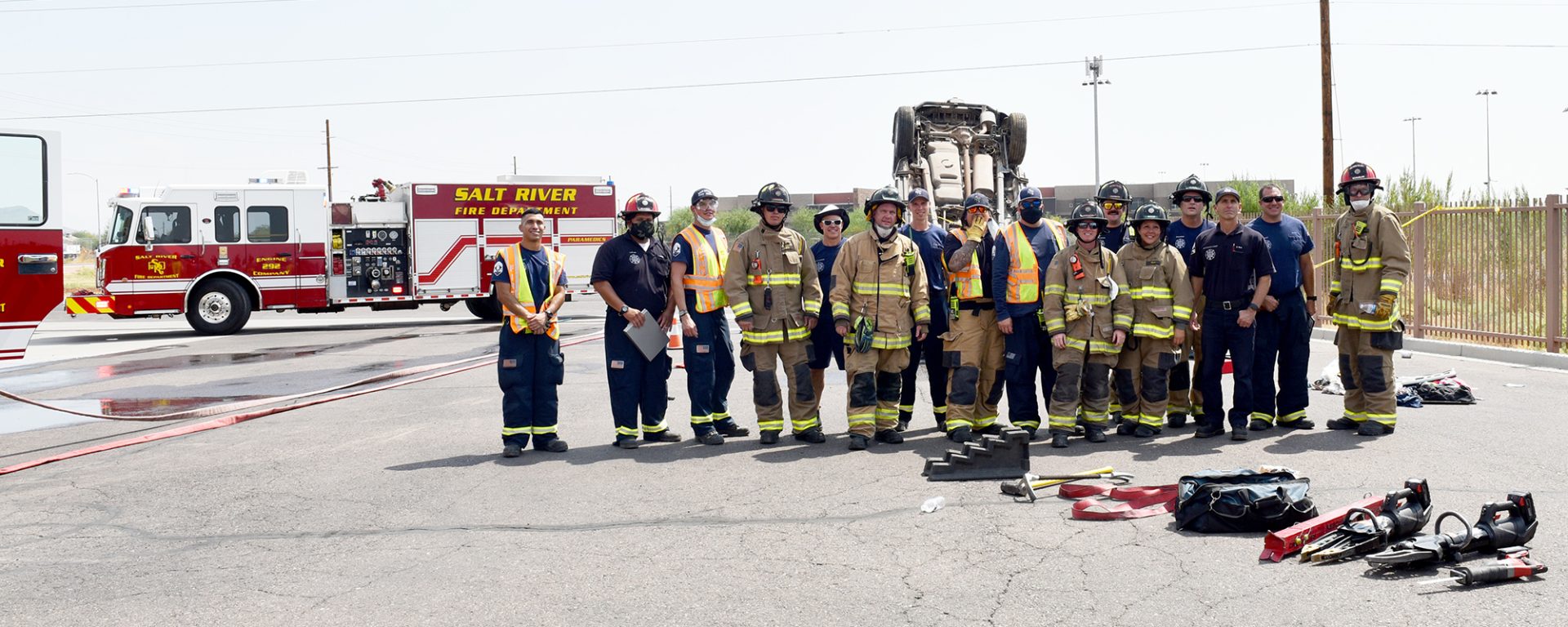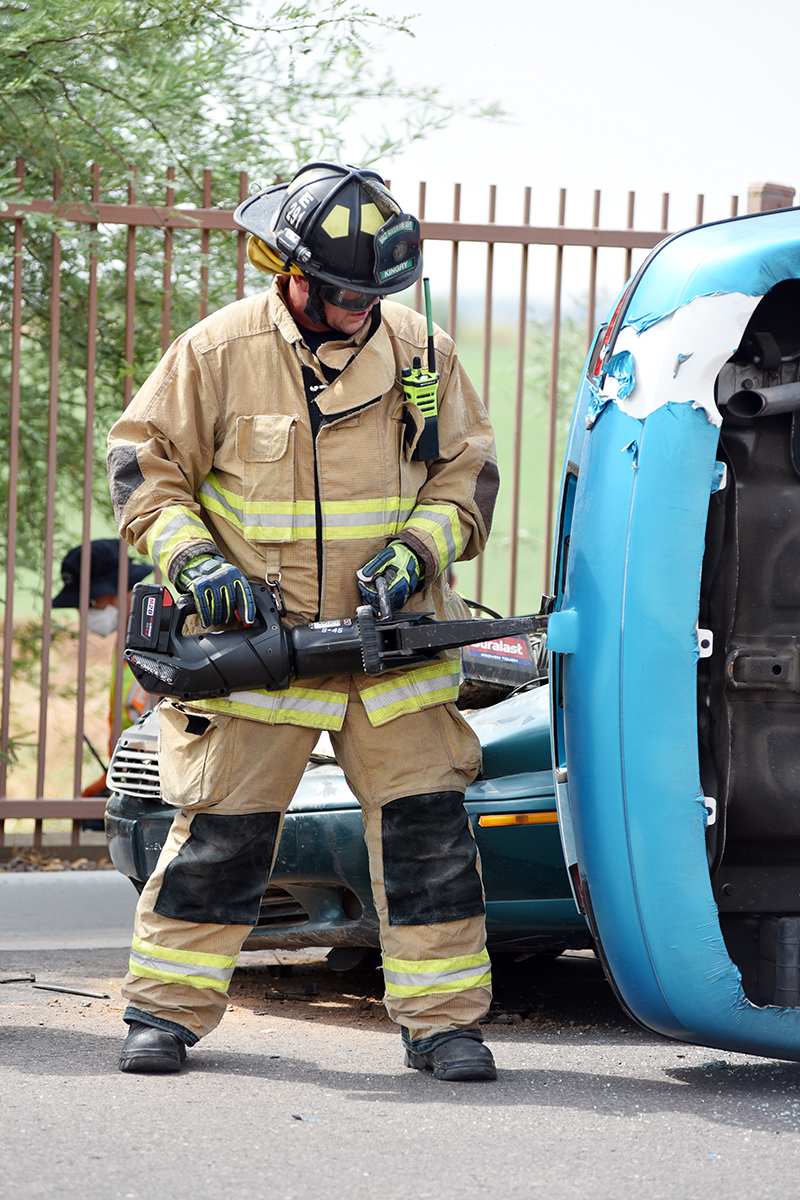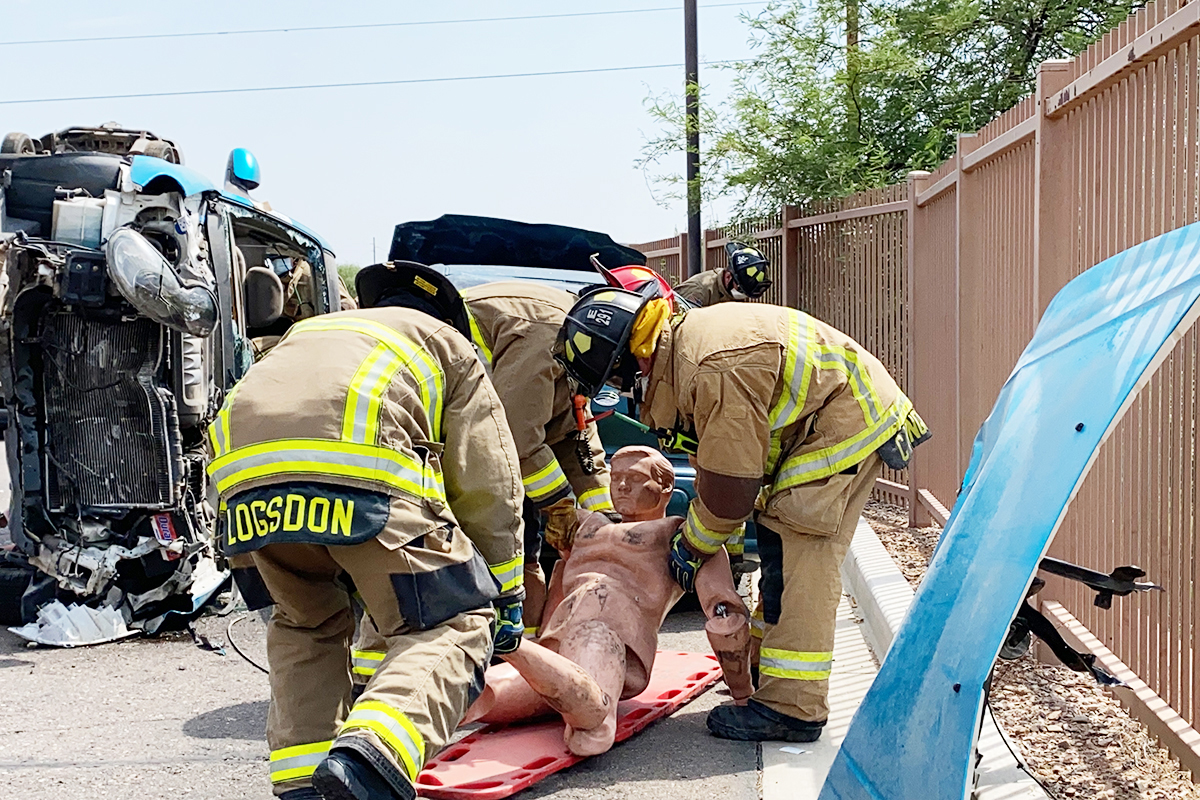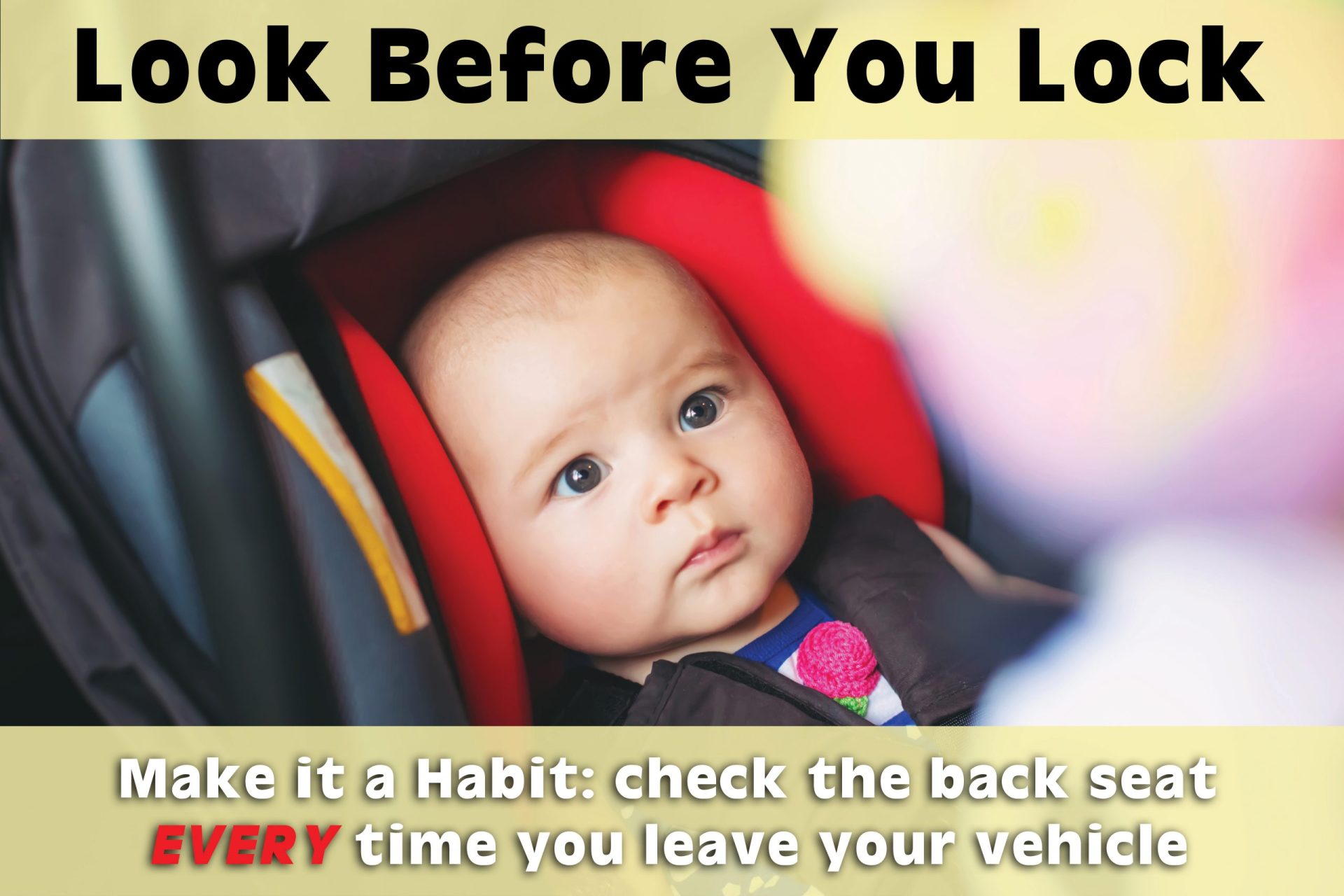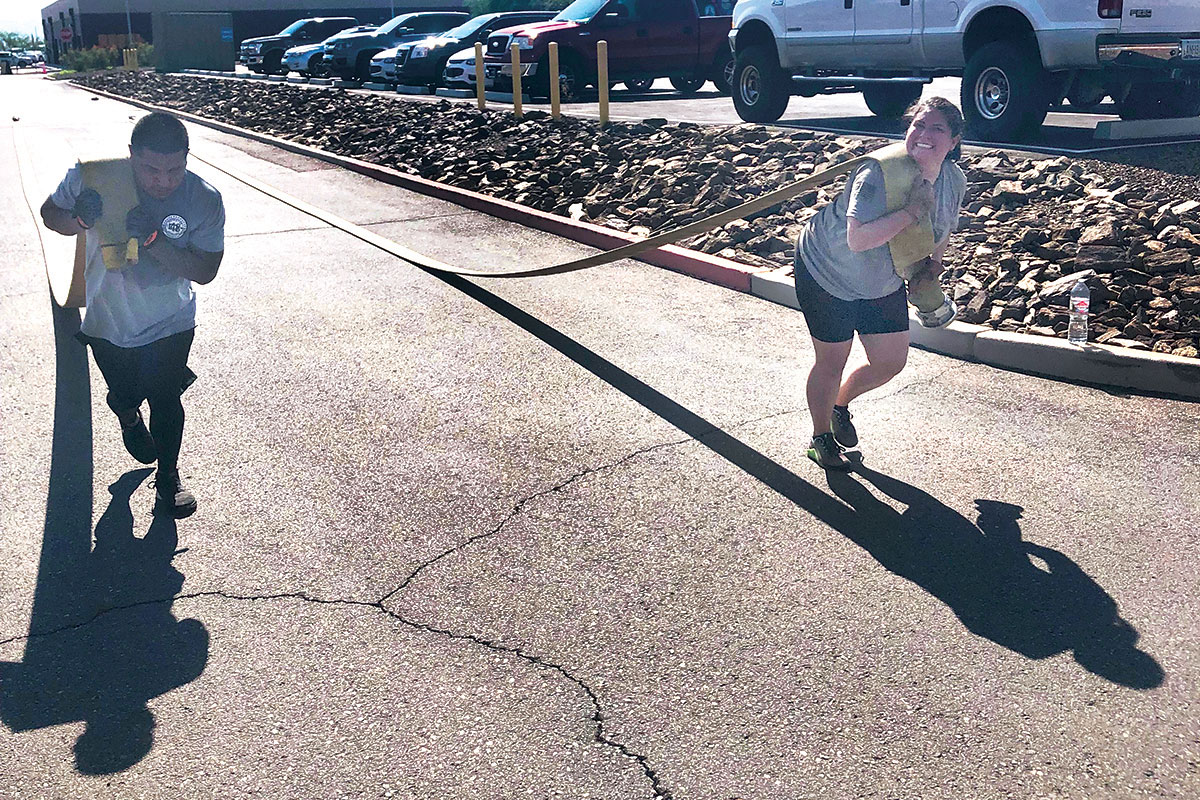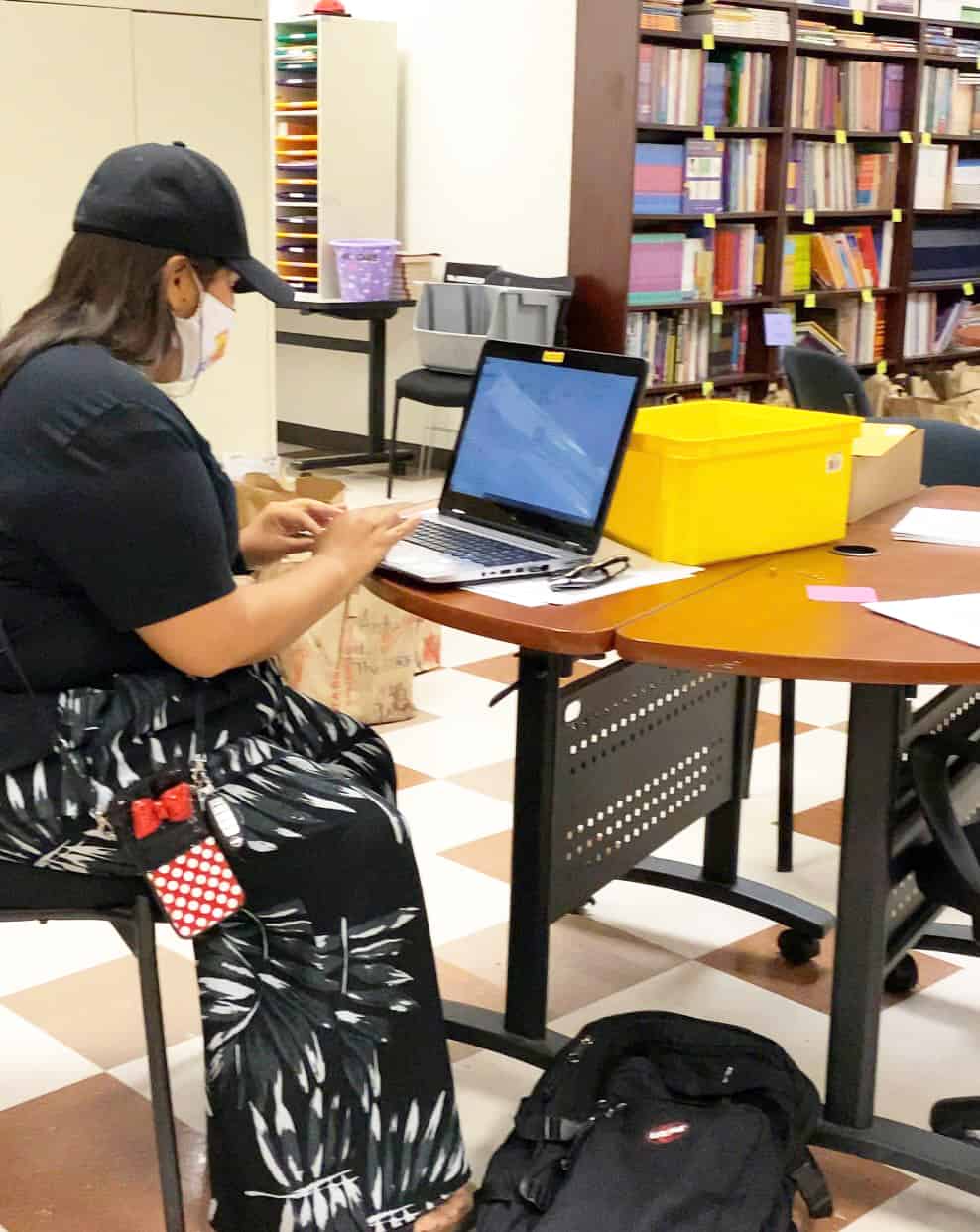VIEWS: 2495
September 16, 2020SRFD Holds Vehicle Extrication Training Event
On a recent overcast morning, Salt River Fire Department (SRFD) Battalion Chief Mike Mink knelt on the ground, surrounded by broken glass and debris, writing instructions on a piece of cardboard to place on an overturned vehicle as he prepared for the SRFD’s Vehicle Extrication Training. Earlier in the week, RezHawk Towing and Recovery donated four vehicles to create two mock accident scenes for use in a week of training for the SRFD to sharpen their skills for managing a vehicle extrication situation.
This training helps the SRFD when responding to motor vehicle accidents of a severe nature, explained Mink.
In one of the simulated accident scenes, a two-vehicle rollover accident had five victims: four adults and one infant. Items found on the scene indicated that alcohol and drugs were present in one vehicle, and that vehicle’s occupant was trapped. In the second vehicle, two victims were trapped and one adult and an infant were ejected and lying in a field next to the accident scene.
“This is a critical scenario today because, as you can see over here, we have two simulated individuals that were ejected from the vehicle, which unfortunately does happen from time to time,” said Mink. “When we arrive to a scene like this, we quickly triage patients. Triage is where we check to see how severely wounded the patient is and whether they have any life-threatening injuries.”
In this simulated accident, each victim had a piece of white tape stating their injuries, age and vital signs. Participating units referred to this information to determine which patients were the most critical and who needed to go to a trauma center.
After assessing the scene, the SRFD units quickly moved on to extrication, removing victims from the vehicles using hydraulic tools such as the jaws of life. They then moved the victims to a treatment area, a collection point where another unit of paramedics started providing primary medical care and getting the patients into ambulances.
“Extrication [involves] a whole litany of tasks. We have to stabilize the vehicles and figure out how to … get the [rescuers] in safely without compromising the structure of the vehicle. They then have to get the patients out without [inadvertently wounding] any of our personnel or causing any further injury to any of the victims inside the vehicles,” said Mink.
“This training is giving our aspiring captain and battalion chief candidates the opportunity to run incidents in a training atmosphere,” said Mink. “Today we have a couple of Acting Captain Internship Program candidates [working on this rescue drill]. We give them a little bit of stress and let them do some decision-making in a safe environment before we certify them to move up as a captain. Today my captain on Engine 1 is acting battalion chief, who actually runs the Incident Command side of things. Once they get on scene, they will take over command. It will give them an opportunity to [coordinate a] significant medical response today, and I get to critique [their performance] as the battalion chief. Hopefully it’s a learning opportunity for them.”
Two Community members, SRFD Fire Engineer Joan Wood and Fire Captain Robert Scabby, both played a role in the two areas of the training. Wood took part in the extrication of the victims; she and her unit arrived on scene first, assessing the scene and seeing how many victims there were. They then gathered tools and strategized a plan to get the victims out and pass them over to Scabby and his unit for medical assistance and transport.
“The drill was terminated once we had every critical patient, which was five, transported off the scene. In real life, that is when everything is done,” said Scabby about how the training ended. “It was a pretty good drill; we had our dispatch center working in conjunction with us, so it was pretty realistic. [I]t was as real as you can get.”
The training helps the SRFD units stay fresh on their skills of incident command and operations for medical response to an accident scene. With safety being their highest priority, this training will help them be prepared to conduct the exact same actions when called to respond to a vehicle accident on the Loop 101 Freeway, Beeline Highway or anywhere in the Community.

